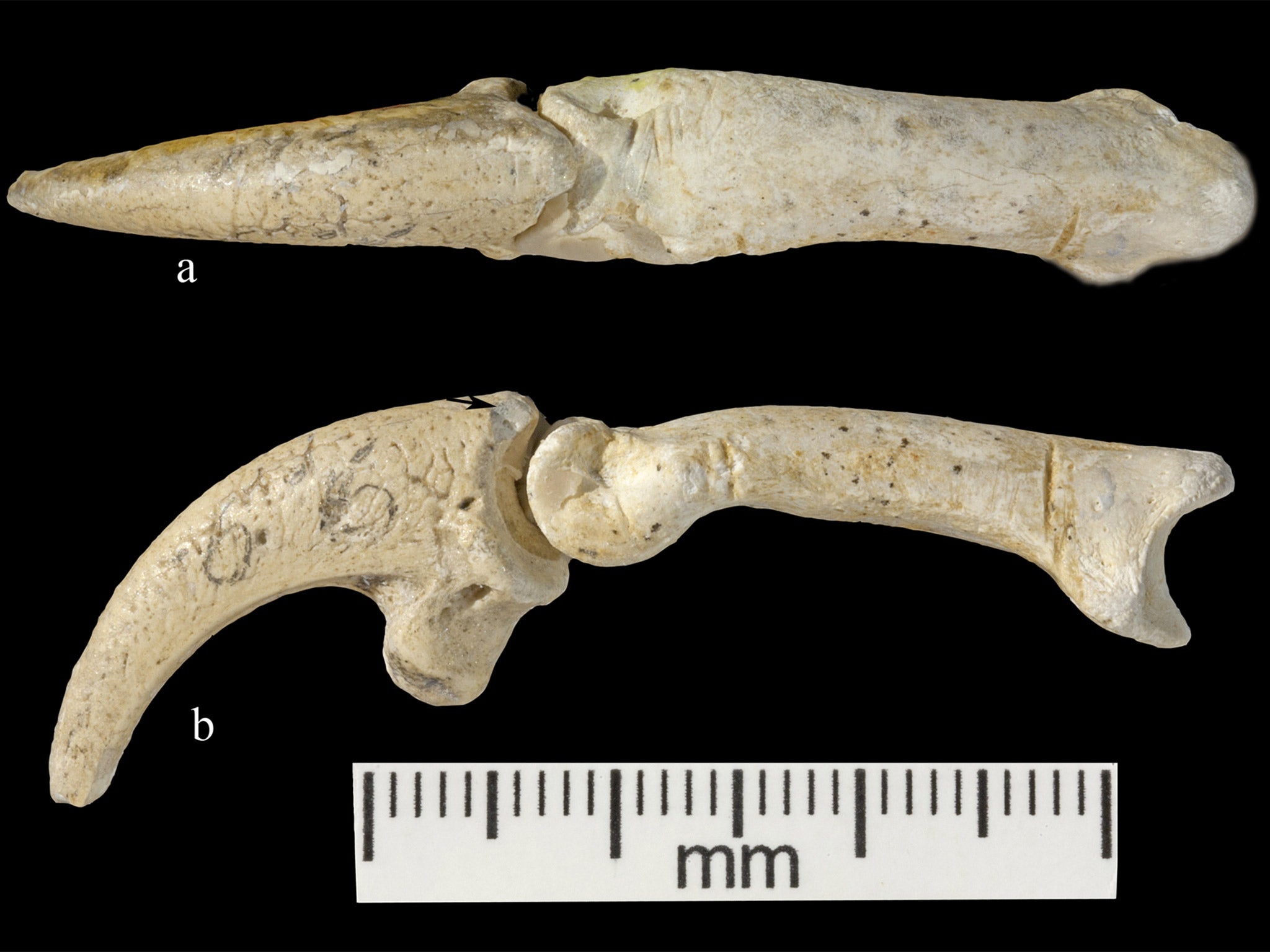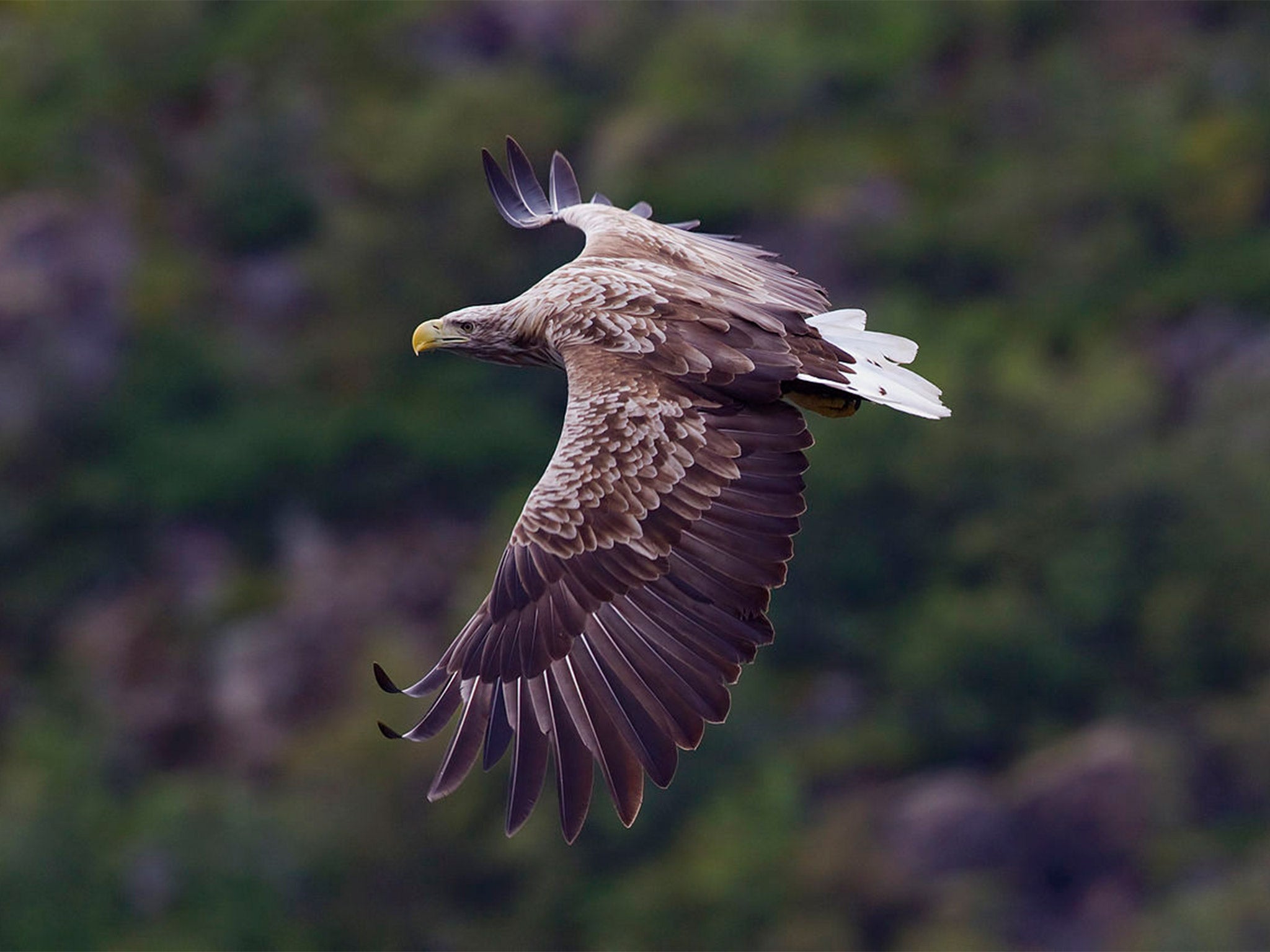Neanderthals made jewellery from eagle talons in Europe 80,000 years before Homo sapiens arrived
Scientists study 150,000-year-old necklace

Your support helps us to tell the story
From reproductive rights to climate change to Big Tech, The Independent is on the ground when the story is developing. Whether it's investigating the financials of Elon Musk's pro-Trump PAC or producing our latest documentary, 'The A Word', which shines a light on the American women fighting for reproductive rights, we know how important it is to parse out the facts from the messaging.
At such a critical moment in US history, we need reporters on the ground. Your donation allows us to keep sending journalists to speak to both sides of the story.
The Independent is trusted by Americans across the entire political spectrum. And unlike many other quality news outlets, we choose not to lock Americans out of our reporting and analysis with paywalls. We believe quality journalism should be available to everyone, paid for by those who can afford it.
Your support makes all the difference.Neanderthals were making jewellery from the talons of the white-tailed eagle – one of the largest birds of prey in Europe – 80,000 years before the first members of our own species Homo sapiens arrived on the continent, scientists have discovered.
A study has revealed that eight claws from at least three different eagles had been made into a necklace or bracelet worn by Neanderthal people when they were the only humans in Europe 150,000 years ago.
The scientists said that the discovery shows that Neanderthal man was not the brutish species he is frequently depicted, but someone who was capable of careful planning and an ability to recognise the symbolic beauty of body ornaments.
“Homo sapiens was not so unique in expressions of symbolism. A lot of evidence emerging in the last few years provides new information about the sophistication of Neanderthals, despite all the decades of prehistoric bias and discrimination against them,” said David Frayer, emeritus professor anthropology at the University of Kansas.
“Neanderthals are often thought of to be simple-minded mumbling, bumbling, stumbling fools. But the more we know about them, the more sophisticated they’ve become,” Professor Frayer said.

The eight talons and a foot bone were once attached to one another by a string or thread, the scientists believe. In addition to 21 individual cut marks, the talons have polished surfaces caused by one talon rubbing against another, said Professor Frayer, who was part of the team that identified the jewellery.
“These are the oldest [eagle talons] found and there are eight, all showing signs of wear, polish and/or manipulation, suggesting they were part of a jewellery composition, maybe a necklace, maybe a bracelet,” Professor Frayer said.
“We do not know how they were acquired, but eagles are rare in the environment, not easy to find or catch, and likely pretty vicious once caught,” he said.
“If they caught them, it must have involved a lot of planning and forethought. Besides being sophisticated enough to catch or acquire the talons, they strung them together into an assemblage,” he added.

The talons were discovered 100 years ago at the famous Krapina Neanderthal site in Croatia, but it was only recently that scientists had recognised the human cut marks and the signs of wear showing that they were once part of a single item of jewellery.
Davorka Radovcic, curator of the Croatian Natural History Museum in Zagreb, decided to analyse the talons with modern techniques, which revealed that they had once been used to adorn the body either as a bracelet or necklace.
Four of the talons bear multiple edge-smoothed cut marks and eight have polished facets or abrasions. Three of the largest talons have small notches at roughly the same place along the same surface of the claw, according to the study published in the online journal Plos One.
The dating of the underground layer were the eight talons and foot bone were found shows that they are 150,000 years old, a time when the Neanderthals were the only human species inhabiting Europe.
“It’s a really stunning discovery. It’s one of those things that just appeared out of the blue,” Professor Frayer said.
“It’s so unexpected and it’s so startling because there’s just nothing like it until very recent times to find this kind of jewellery. It’s associated with fossils that people don’t like to consider to be human,” he said.
Join our commenting forum
Join thought-provoking conversations, follow other Independent readers and see their replies
Comments